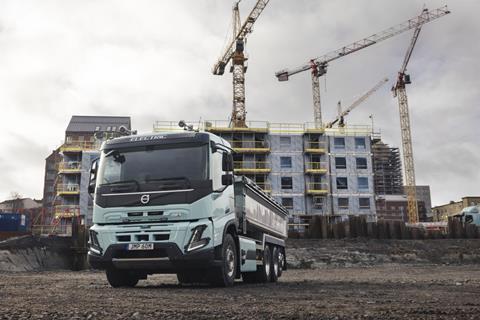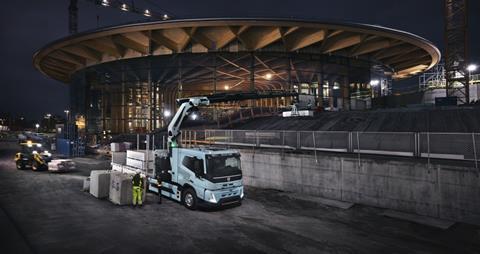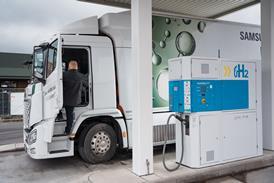Volvo Trucks has developed a range of heavy-duty electric trucks for the construction industry: the FM and FMX. The new vehicles provide lower noise levels and zero exhaust emissions on and around urban construction sites, making them suitable for short distances and repetitive processes.

The trucks are equipped with simple chassis and a variety of bodies such as tippers, mixers, and cranes, all of which are offered in electric versions. The electric trucks have a variety of cab and battery options, as well as a wide range of axle configurations, which allows for a more flexible choice of chassis and a shorter wheelbase of up to 3,900 mm. This creates the flexibility to adapt the truck for a variety of construction work.
Customers can choose battery packs with up to six batteries to meet their specific range and payload requirements. The new trucks have a battery capacity of between 180 and 540 kWh. By not having more batteries on board than necessary, the payload and productivity can be increased. Three types of power take-off (PTO) on the electric trucks facilitate the installation of electrical or mechanical superstructures, which offer good opportunities to optimize energy consumption and avoid excessive noise.
Volvo Trucks is the only truck manufacturer currently offering a complete range of electric trucks in series production. The company has set a goal of powering half of its new trucks sold worldwide electrically by 2030 at the latest. The Volvo FM-Electric and FMX-Electric can be equipped with a variety of bodies, and series production will begin in March 2023.

Jessica Sandström, Global Product Manager at Volvo Trucks, said, “Our electric trucks can be tailor-made for many of these tasks, meaning construction customers can now get the same truck they already use today in the electric version. This gives them better manoeuvrability, lower noise levels and zero exhaust emissions.”
The initial variations of the FH, FM, and FMX Electric vehicles have been in series production in Gothenburg since September of last year. Additional variants are set to be released later this year. This month (March 2023), the model featuring three electric motors, a 490 kW powertrain, and five to six batteries with a total capacity of 450 to 540 kWh will be produced. Following that, the 330 kW variant, equipped with two electric motors and a 360 kWh battery pack, will enter production in May. A smaller variant with a battery capacity of 180 to 270 kWh is slated for series production in September 2023, but it may be available for order as early as June.


















